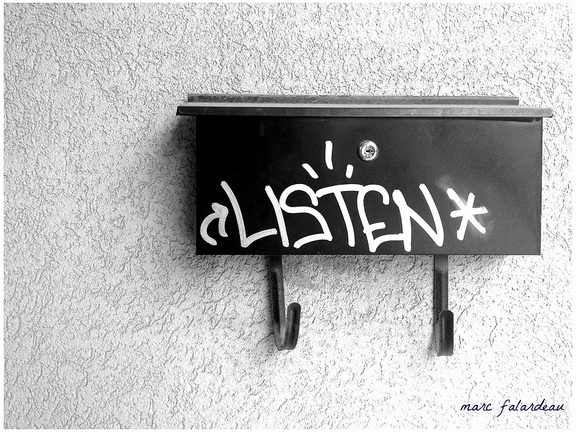Communicating Through Listening
When I was a journalist, one of my favorite interview tactics was to ask a question, wait for the answer and then wait a bit longer. It was a technique I had been taught – never ask a follow-up question too quickly. I still remember my journalism professor explaining that it was in those moments of silence – the imploring quiet that follows the canned answer – that you would often get the real story.
And sometimes, what is not said is even more telling than what is.
Because I started my communication career as a newspaper reporter, I learned early on the importance of listening. It also taught me to pay attention to how people are interacting, how information is exchanged, who dominates conversations, as well as both verbal and non-verbal cues. Over the last 20-plus years of observing human communication patterns, I have found one consistent and disturbing reality: We are listening less and talking more.
This new reality takes many shapes – from people who insist on “listening” while reading email on a mobile phone to those who constantly interrupt others to people who nod when someone else is talking but aren’t really listening because they are too busy formulating their response.
During his fascinating TED talk in 2011, sound expert Julian Treasure pointed out, “We are losing our listening” and “The art of conversation is being replaced – dangerously, I think – by personal broadcasting.”
Why is this important? Because listening is the crux of any good communication.
Listening is what allows us not only to learn, but to be connected with those around us. It makes us part of our communities and societies. It makes us valuable team members at work. It allows us to be empathetic and responsive.
But it is more than just an interpersonal issue. It’s a business issue.
Listening to what customers want is an important step to effectively communicating with them. Sales, after all, is a two-way street. It can’t simply be about what you want to offer. It really has to be about what the market is telling you it wants. What are their pain points? What do they care about? What issues are they trying to solve on a daily basis for their own customers?
Once a company has listened and understands this information, only then should it determine how its offerings meet the needs of its clients.
In a world where we are surrounded by a cacophony of noise, listening has become harder to do to. But it is imperative if we are to continue to communicate and connect with those around us.
Do you feel like you’re adequately listening to your clients? Do you know their pain points? If not, how do you plan to change this?
Connect with Julie:
Email: julie@blisspr.com
Twitter: @julieajohnson1
LinkedIn: Julie A. Johnson
